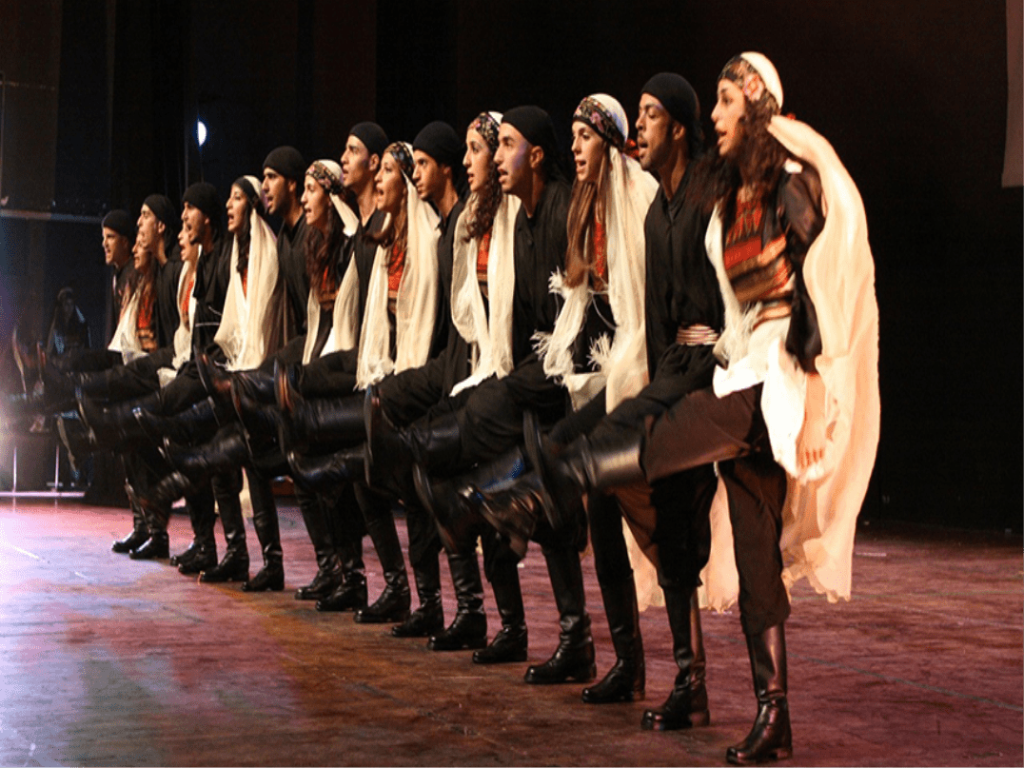For those learning Arabic and eager to immerse themselves in the vibrant tapestry of Arab culture, prepare to move your feet to the rhythm of Dabke! More than just a dance, Dabke is a powerful expression of community, celebration, and heritage that resonates deeply throughout the Levant and beyond. If you’ve ever wondered what is Dabke, or perhaps heard of the energetic Lebanese dabke, then you’re in for a treat. Let’s explore the captivating world of Dabke and understand why it’s such an integral part of Arab identity.
What is Dabke? A Dance of Unity and Energy:
At its core, Dabke is a lively and synchronized line dance, characterized by its rhythmic stomping of the feet and intricate steps. Dancers link arms or hold hands, moving together in a semi-circle or straight line, guided by the dynamic beat of traditional music. The energy of dabke dancers is infectious, creating a powerful sense of unity and shared joy. Think of it as a collective heartbeat expressed through movement.
Tracing the Origins: The History of Dabke Dance:
While the exact origins are debated, many believe that Dabke has roots in ancient Levantine traditions related to pressing down mud or earth to flatten roofs. The synchronized stomping may have evolved from this practical activity into a communal expression of cooperation and strength. Over time, Dabke transformed into a celebratory dance, marking important occasions like harvests, weddings, and community festivals.
Regional Flavors: Exploring the Variations of Dabke:
The beauty of Dabke lies not only in its unifying spirit but also in its regional variations, each with its own distinct style and rhythm. While the core elements remain, you’ll find fascinating differences as you explore dabke dance across the Levant:
- Lebanese Dabke (الدبكة اللبنانية): Perhaps the most widely recognized form, Lebanese dabke is known for its energetic pace, intricate footwork, and the prominent role of the Lawweeh (لويح) or leader. The Lawweeh is a skilled dabke dancer who often breaks away from the line to perform impressive solo improvisations, including leaps, spins, and complex foot patterns, while holding a handkerchief or other prop.
- Palestinian Dabke (الدبكة الفلسطينية): Palestinian Dabke often carries a strong element of national identity and resistance, expressing cultural resilience through its powerful movements and traditional songs.
- Syrian Dabke (الدبكة السورية): Syrian Dabke encompasses diverse regional styles, reflecting the country’s rich cultural tapestry. You might find variations in rhythm and step patterns depending on the area.
- Jordanian Dabke (الدبكة الأردنية): Jordanian Dabke shares similarities with other Levantine forms but has its own unique rhythmic emphasis and step variations.
- Iraqi Dabke (الدبكة العراقية): While less widely known internationally, Iraq also has its own traditions of line dancing that share similarities with the Levantine Dabke, often with distinct regional rhythms and steps.
The Heart of the Performance: Dabke Dancers and the Leader:
The dabke dancers move as one, their synchronized steps creating a mesmerizing visual and auditory experience. The Lawweeh plays a crucial role in guiding the dance, setting the tempo, signaling changes in steps, and adding flair with their solo performances. The connection and communication between the Lawweeh and the rest of the dabke dancers are essential to the energy and flow of the dance.
The Soulful Sound: Music and Rhythm of Dabke:
The infectious energy of Dabke is inseparable from its vibrant music. Traditional instruments like the oud (عود – lute), rabab (ربابة – a stringed instrument), mijwiz (مِجْوَز – a double-piped clarinet), and most importantly, the tabl (طبل – drum) provide the rhythmic backbone of the dance. The strong, driving beat of the tabl dictates the pace and intensity of the dabke dance, compelling dancers and onlookers alike to move to its rhythm.
More Than Just Steps: The Cultural Significance of Dabke:
Dabke is far more than just a form of entertainment; it’s a powerful symbol of Arab culture and identity. It embodies:
- Community: Dabke brings people together, fostering a sense of belonging and shared identity.
- Celebration: It’s an integral part of joyous occasions, amplifying the collective happiness.
- Heritage: It preserves and transmits cultural traditions from one generation to the next.
- Resistance: In some contexts, particularly Palestinian Dabke, it has also served as a form of cultural resistance and a powerful expression of national identity.
Dabke Today: A Dance for the World:
Today, Dabke continues to thrive, both in the Arab world and within the diaspora communities in countries like the US, UK, Canada, and Australia. You’ll find dabke dancers performing at cultural festivals, weddings, parties, and even in organized competitions and performances, showcasing the enduring appeal and evolving artistry of this dynamic dance form.
Learning about Dabke offers a fantastic window into the heart of Arab culture. While mastering the steps might take practice, understanding its significance and feeling its infectious energy is something everyone can appreciate.
To further explore the rich traditions of Arab culture and perhaps even learn some Arabic phrases to talk about music and dance, we invite you to visit our website. Let the vibrant world of Arab culture move you!
If you enjoyed this article and you’d like to know more about this Arabic folk dance or anything else on Arab culture, shuffle on over to kaleela.com for more great stuff. While you’re there, you can even learn Arabic language skills by downloading the Kaleela Arabic language app. Research has shown that the best way to learn Arabic is through downloadable Arabic learning apps, so give the Kaleela Arabic learning app a try today by downloading it to your IOS or Android mobile device. You’ll be glad you did.



